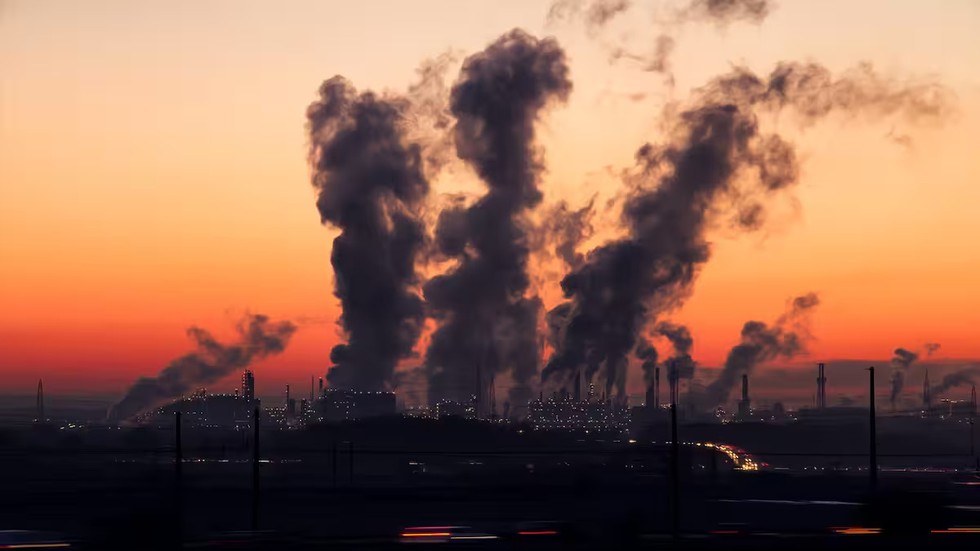About Sulphur Dioxide:
- It is a colorless gas with a pungent odor.
- Properties of Sulphur Dioxide:
- It is a liquid when under pressure, and it dissolves in water very easily.
- It has a pungent, irritating odor, familiar as the smell of a just-struck match.
- Occurrence of Sulphur Dioxide:
- Sulfur dioxide in the air comes mainly from activities such as the burning of coal and oil at power plants or from copper smelting.
- It is usually prepared industrially by the burning in air or oxygen of sulfur or such compounds of sulfur as iron pyrite or copper pyrite.
- In nature, sulfur dioxide can be released to the air from volcanic eruptions.
- The largest source of SO2 in the atmosphere is the burning of fossil fuels by power plants and other industrial facilities.
- Applications: It is used to manufacture chemicals, in paper pulping, in metal and food processing.
- Impacts of Sulphur Dioxide: It is harmful for human health, environment and climate.
What is Flue Gas Desulphurisation (FGD)?
- It is a pollution-control process that removes Sulphur Dioxide (SO₂) from the flue gases produced by the combustion of fossil fuels, especially coal.
- FGD systems typically use limestone (CaCO₃), lime (CaO), or ammonia (NH₃) to react with and neutralize SO₂ in flue gases.
